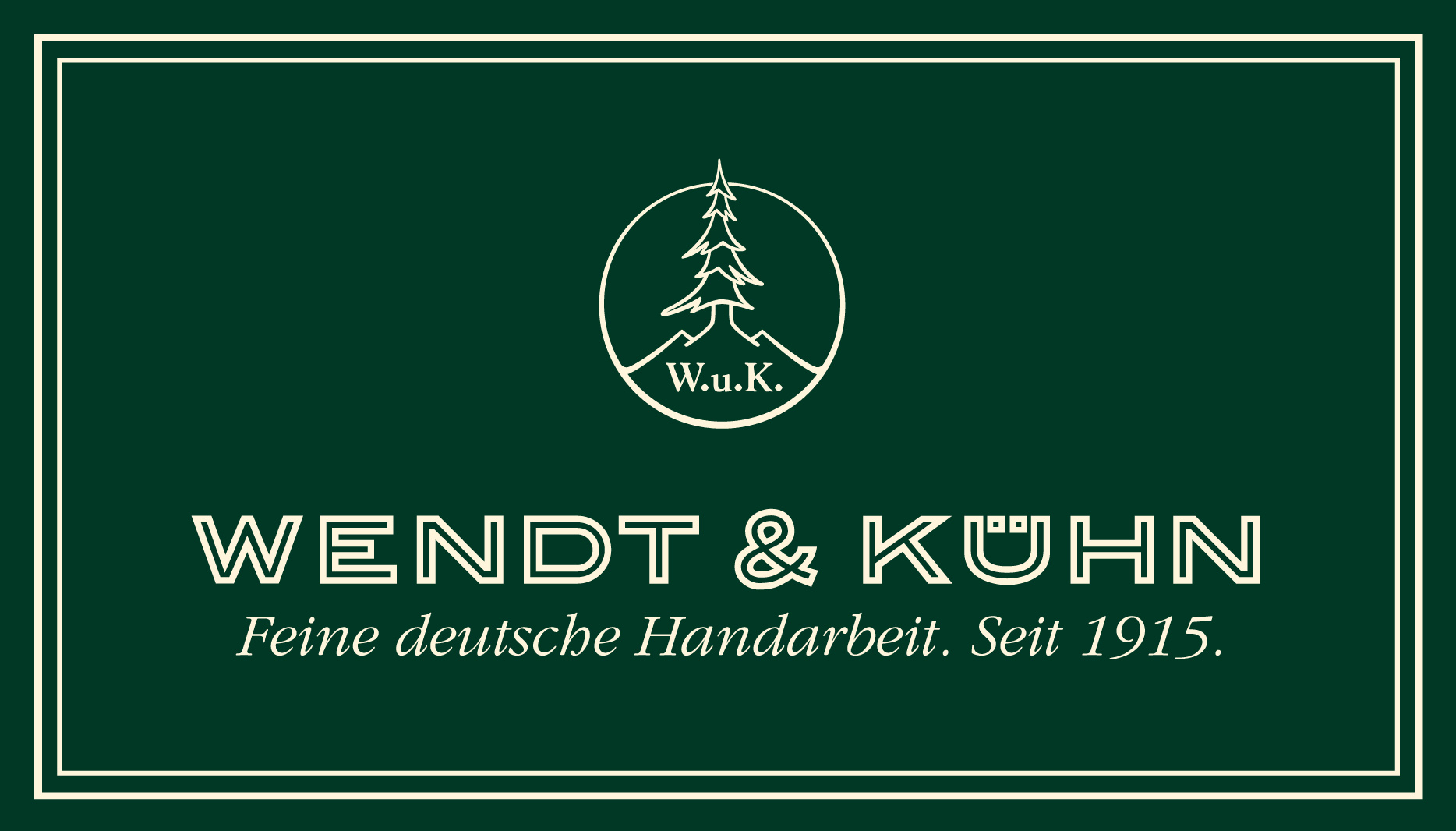
Christmas tree decorations have a long tradition at Wendt & Kühn. Back in 1923/24, company founder Grete Wendt designed a suspended Eleven Dot Angel with a flute. Designer Olly Wendt (née Sommer) also devoted herself to the theme of Christmas tree decorations. In 1958, she designed the Marguerite Angel in a Ring, which was the first in a long line of similar designs. Now, in 2025, a new series of Wendt & Kühn Christmas ornaments, inspired by Olly’s Angels in Ring, is being launched in collaboration with INGE GLAS® manufactory. Showing the same sensitivity that characterized the original designer and honoring the figurine’s creative roots, Olly Wendt’s “large” Marguerite Angel has now been clamped onto a brass ring. It comes as a major addition to the current range of tiny one-inch (2.5 cm) Marguerite Angels which already dangle from Christmas tree branches in their golden rings. Into the hands of the new angel, we have put a miniature tree and bell. And because one simply cannot get enough of the sweet sound of bells at Christmas, the angel comes paired with a masterfully crafted glass bell. The shape of this glass bell matches that of the angel’s wooden bell – a wonderful combination of two enchanting accessories on your Christmas tree.
The INGE GLAS® manufactory has been practicing the traditional craft of glassblowing for 15 generations. The collection of glassblowing molds is unique, with an inventory of around 15,000 pieces from two centuries. In the in-house model making department, not only are the historical molds maintained and preserved for use, but new, contemporary ornaments are also modeled. Baubles, tree toppers and much more are free-formed over the flame by experienced glassblowers. In the creation of figurines, the evenly heated glass is blown into special molds with superb dexterity.
How the glass bell is made
As we open the doors of the glassblowing workshop at the Neustadt bei Coburg headquarters of INGE GLAS® in Bavaria, Germany, we are greeted by the glow of the naked flame that blazes at every glassblower’s workplace. Here, baubles, tree toppers and various other Christmas ornaments are free-blown by mouth at the burner, applying traditional craftsmanship techniques. The glassblower gazes intently at a glass tube – initially the dimensions of a drinking straw with a thickening in the middle – which glows honey-colored as it is heated over the flame. He knows exactly when the glass is at the right temperature. Then, with a steady breath, the craftsman puts the blowpipe to his lips. The air, which he blows in a slow, controlled manner, begins to shape the molten glass. The thickening initially swells into a ball – shimmering, almost weightless, which is then carefully formed into a bell shape by a process of pulling and pushing. As easy as child’s play, one might think. But every breath, every movement is a “dance” of experience and intuition. One last twist, a final check, and the craftsman cuts off the lower end of the glass tube from which the bell has been formed. The tube at the top of the bell remains intact for the time being – it will serve as a handy gripper in the subsequent production steps and is melted off only at the very end. Next, a die is carefully pressed into the hollowed-out and still malleable glass from below to form the classic bell shape. At a later stage, a clapper will be attached to the inside top to make the bell ring. Once the glass bell has been allowed to cool down, the silvering process begins. A colleague fills the transparent bell with a solution of real sterling silver before swirling it around in hot water. This causes the silver to be deposited on the inside of the glass, and the bell now shines with its characteristic brilliance. At the next workstation, colors are applied by dipping the bell in large buckets filled with gold or white paint. The transparent paint covers the silver undercoat like a soft veil – this is how the magnificent colored sheen is achieved. The excess paint is removed with a skillful whisking motion, and the bell is then left to dry. It’s a process that is all too familiar to the Wendt & Kühn craftsmen and women: our figurines are also dipped upside down in a paint bath and the excess paint is spun off.
While this procedure is carried out three times for the wooden figurines from Grünhainichen, a single dip is sufficient for the glass bell. This creates a fine base for the subsequent decorative painting in both manufactories. Even the next step in the process shows parallels with the work in the Grünhainichen workshops: the painters use a thin brush and a steady hand to apply the fine floral pattern around the body of the bell. The creative masterstroke is undoubtedly the gold mica, which makes the bell glitter in a delightful interplay with the matt background. To achieve this, the craftswomen sprinkle the bell with mica – just like fairy dust – that sticks to the areas previously dabbed with glue. And as if by magic, the tendrils begin to sparkle. Finally, each bell undergoes a quality check. Only once it has passed is it “crowned” with its Sternkrönchen® – the hallmark of INGE GLAS®. This marks the final stage in the approximately twelve steps involved in producing the bell specially developed for Wendt & Kühn. A unique piece has been created – from glass, fire, and air, with dedication and a practiced hand.

![[Translate to Englisch (US):] Engel im Ring und Glocken an Tannengrün](/fileadmin/_processed_/1/9/csm_Set_Inge-Glas_33f48f4607.jpg)
![[Translate to Englisch (US):] Engel im Ring und Glocken an Tannengrün](/fileadmin/_processed_/d/f/csm_Engel_im_Ring_mit_Glocke_weiss_c4c09ce04a.jpg)
![[Translate to Englisch (US):] Engel im Ring mit Glocke](/fileadmin/_processed_/f/b/csm_Engel_im_Ring_mit_Glocke_faa5e7142a.jpg)